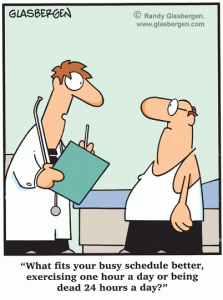
Diagnosed with Cancer? Your two greatest challenges are understanding cancer and understanding possible side effects from chemo and radiation. Knowledge is Power!
Learn about conventional, complementary, and integrative therapies.
Dealing with treatment side effects? Learn about evidence-based therapies to alleviate your symptoms.
Click the orange button to the right to learn more.
- You are here:
- Home »
- Blog »
- side effects ID and prevention »
- Chemotherapy Damages Muscle-
Chemotherapy Damages Muscle-

“In addition, cancer patients with low skeletal muscle mass during cancer treatment have been reported to have a higher risk of mortality (3–5), cancer recurrence (6–8), and reduced quality of life (9).
You have been diagnosed with cancer. Your oncologist is prescribing chemotherapy. According to the research below, the more muscle mass you have going into chemotherapy treatment, the better off you will be.
In my experience, oncologists spend little if any time discussing the probable side effects of chemotherapy. More importantly, preparing for chemotherapy, according to the research linked below, can help you respond better, manage side effects better, do better all the way around.
Let me be more specific.
- Chemotherapy can reduce muscle mass.
- The more muscle mass a person begins chemo treatment with, the better he/she will manage chemo.
The solution in my experience is “pre-habilitation.’ That is to say you should “get in shape” for your chemo treatment. If you are reading this post after you have already begun chemotherapy treatment, try to exercise as best you can going forward.
While exercise is important for building muscle, as a 60 plus year old cancer survivor, I have to also share my experience with equally important pre-habilitation therapies such as nutrition, sleep, supplementation, etc.
- Whole-body Vibration-bone, Muscle, Lymph User Experience
- Collagen-Skin, Muscle, Joint, Brain and Heart Health-
- Diet- Smoothies are Fast, Easy, Nutritious
- Sleep Secrets of a Long-Term Myeloma Survivor
I exercise daily. But, let’s be honest. I don’t work out that hard. Light weights, or slow movement on the elliptical. My goal is a sort of long-term or permanent pre-habilitation.
Nutrition, exercise, sleep, supplementation, etc. are not included in the FDA “standard-of-care” therapy plan for your type of cancer. But believe me, these evidence-based, non-toxic therapies are central to your survival.
Have you been diagnosed with cancer? What type? What stage? What therapies are you considering? Scroll down the page, post a question or a comment and I will reply to you ASAP.
Hang in there,
David Emerson
- Cancer Survivor
- Cancer Coach
- Director PeopleBeatingCancer
Recommended Reading:
- Surviving Multiple Myeloma- Post-Cancer Fear
- A Long-term Multiple Myeloma Survivor’s Diet, Nutrition Plan-
- Multiple Myeloma Survivor- Chemotherapy, Heart Failure-
- Multiple Myeloma Chemotherapy = Accelerated Aging
Chemotherapy may affect muscle cells at lower doses than previously thought
“Previous research has found that chemotherapy can trigger muscle loss in people living with cancer, but a new study out of found it may also affect the way the body builds new muscle — and at lower doses than previously known, having potential implications for treatments and rehab programs…
According to the researchers, it was previously known that chemotherapy drugs can affect the mitochondria within cells, which can cause the loss of muscle tissue via a process called oxidative stress…
In their new study, the researchers studied three different chemotherapy drugs in cultured muscle cells at levels too low to trigger oxidative stress. They found that the muscle cells were still affected by the lower levels of drugs — this time by interfering with the process that builds muscle, called protein synthesis…
Skeletal Muscle Mass Change During Chemotherapy: A Systematic Review and Meta-analysis
“Skeletal muscle mass loss is an emerging concern in oncology. Our systematic review and meta-analysis identified the mean difference in skeletal muscle index pre- to post-chemotherapy and synthesized potential key factors.
Results: Fifteen studies were included, 60% published in the past 2 years (2018-2019). Advanced non-small cell lung cancer was the most frequently reported cancer, and overall survival the most often identified key related factor…
Conclusion: Oncologists should recognize sex-specific differences in skeletal muscle mass loss during chemotherapy and consider adjusting treatment accordingly…
Low skeletal muscle mass is an emerging issue in oncology. While the amount of skeletal muscle mass loss varies widely across cancer types, between 5% and 89% of cancer patients have low skeletal muscle mass (1).
Low skeletal muscle mass at baseline has been reported to the increase incidence of disability among cancer patients and is associated with poor anti-tumor response (2).
In addition, cancer patients with low skeletal muscle mass during cancer treatment have been reported to have a higher risk of mortality (3–5), cancer recurrence (6–8), and reduced quality of life (9)…
The causes of low skeletal muscle mass are multifactorial. These include cancer itself, cancer treatments, and aging (10). Chemotherapy is known to accelerate muscle mass loss in cancer patients…
Consequently, it appears that oncologists and researchers are coming to recognize the clinical significance of patterns of skeletal muscle mass change, especially with regard to patient survival…
In addition, although other review articles have reported studies providing sarcopenia findings (18–20), comparative studies of skeletal muscle mass change during chemotherapy that involve skeletal muscle index measurements have been scarce. In fact, although loss of skeletal muscle mass is a measurable predictor of cancer treatment toxicity, skeletal muscle mass change during treatment has not been widely studied by race/ethnicity or by country; this is true despite the fact that the incidence of sarcopenia is known to differ by race/ethnicity (21–24).
Preservation of muscle mass as a strategy to reduce the toxic effects of cancer chemotherapy on body composition
“Purpose of review- Cancer patients undergoing chemotherapy often experience very debilitating side effects, including unintentional weight loss, nausea, and vomiting. Changes in body composition, specifically lean body mass (LBM), are known to have important implications for anticancer drug toxicity and cancer prognosis. Currently, chemotherapy dosing is based on calculation of body surface area, although this approximation does not take into consideration the variability in lean and adipose tissue mass.
Recent findings- Patients with depletion of muscle mass present higher chemotherapy-related toxicity, whereas patients with larger amounts of LBM show fewer toxicities and better outcomes. Commonly used chemotherapy regimens promote changes in body composition, primarily by affecting skeletal muscle, as well as fat and bone mass. Experimental evidence has shown that pro-atrophy mechanisms, abnormal mitochondrial metabolism, and reduced protein anabolism are primarily implicated in muscle depletion. Muscle-targeted pro-anabolic strategies have proven successful in preserving lean tissue in the occurrence of cancer or following chemotherapy.
Summary- Muscle wasting often occurs as a consequence of anticancer treatments and is indicative of worse outcomes and poor quality of life in cancer patients.
Accurate assessment of body composition and preservation of muscle mass may reduce chemotherapy toxicity and improve the overall survival…”
The association between skeletal muscle measures and chemotherapy-induced toxicity in non-small cell lung cancer patients
“BACKGROUND: Chemotherapy-induced toxicities frequently occur in non-small cell lung cancer (NSCLC) patients treated with platinum-based chemotherapy.
Low skeletal muscle mass (SMM) has been associated with a higher incidence of toxicities for several types of cancers and cytostatics. The aim of this study was to evaluate the association between skeletal muscle measures and chemotherapy-induced toxicity in a large cohort of NSCLC patients.
RESULTS: … Low SMM (ORadj 2.23, 95% CI 1.23-4.04, P = 0.008) and high SMD (ORadj 0.41, 95% CI 0.23-0.74, P = 0.003) were statistically significantly associated with a higher respectively lower risk of DLT.
CONCLUSIONS: Non-small cell lung cancer patients with pretreatment low SMM are at significant higher risk for haematological toxicities grade 3/4 and DLT.
NSCLC patients with high SMD are at significant lower risk for DLT…”


